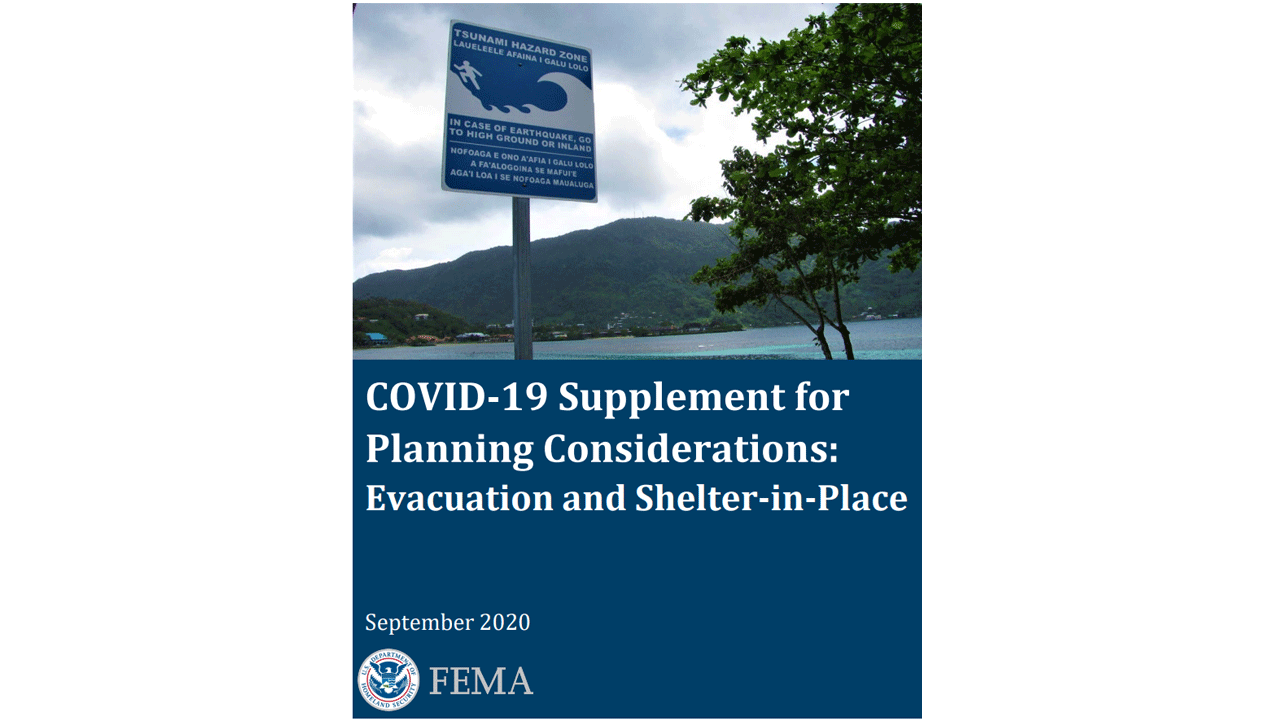FEMA's COVID-19 Supplement for Planning Considerations Evacuation and Shelter-in-Place

This document supports state, local, tribal, and territorial partners in planning for evacuation
and/or shelter-in-place protective actions.1 It summarizes characteristics that jurisdictions should
consider when planning for evacuation and/or shelter-in-place operations and builds on
Comprehensive Preparedness Guide (CPG) 101: Developing and Maintaining Emergency
Operations Plans by providing unique considerations for development of evacuation and shelter in-place plans.2 In addition, this document contains job aids and checklists that jurisdictions can
customize to meet their needs for all disasters regardless of scale.
Protective actions such as evacuation and shelter-in-place have become more important to
emergency management operations in previous years, requiring a more comprehensive look at
concepts and principles that plans should be built around and considerations that are critical to
ensuring effective implementation, this document aims to provide this. Over eight million people
across the nation were affected by evacuation orders in 2017, including:
- Flooding in February near the Oroville Dam in
California caused an evacuation of over 180,000
people
- Hurricane Harvey struck Texas in August and
resulted in the evacuation of over 780,000 people
- Hurricane Irma struck Florida in September and
resulted in evacuation orders covering a record 6.8
million residents
- In October, wildfires in California forced the evacuation of over 100,000 residents.
These disasters illustrate that the use of evacuation and shelter-in-place as protective actions are
commonplace regardless of the threat or hazard. The challenge is to tailor the protective actions
to best address a variety of factors, including a community’s demographics, location,
infrastructure, resources, authorities, and decision-making processes.